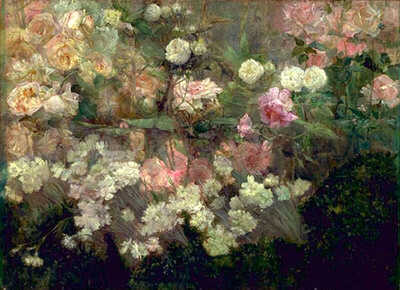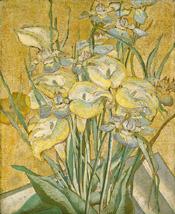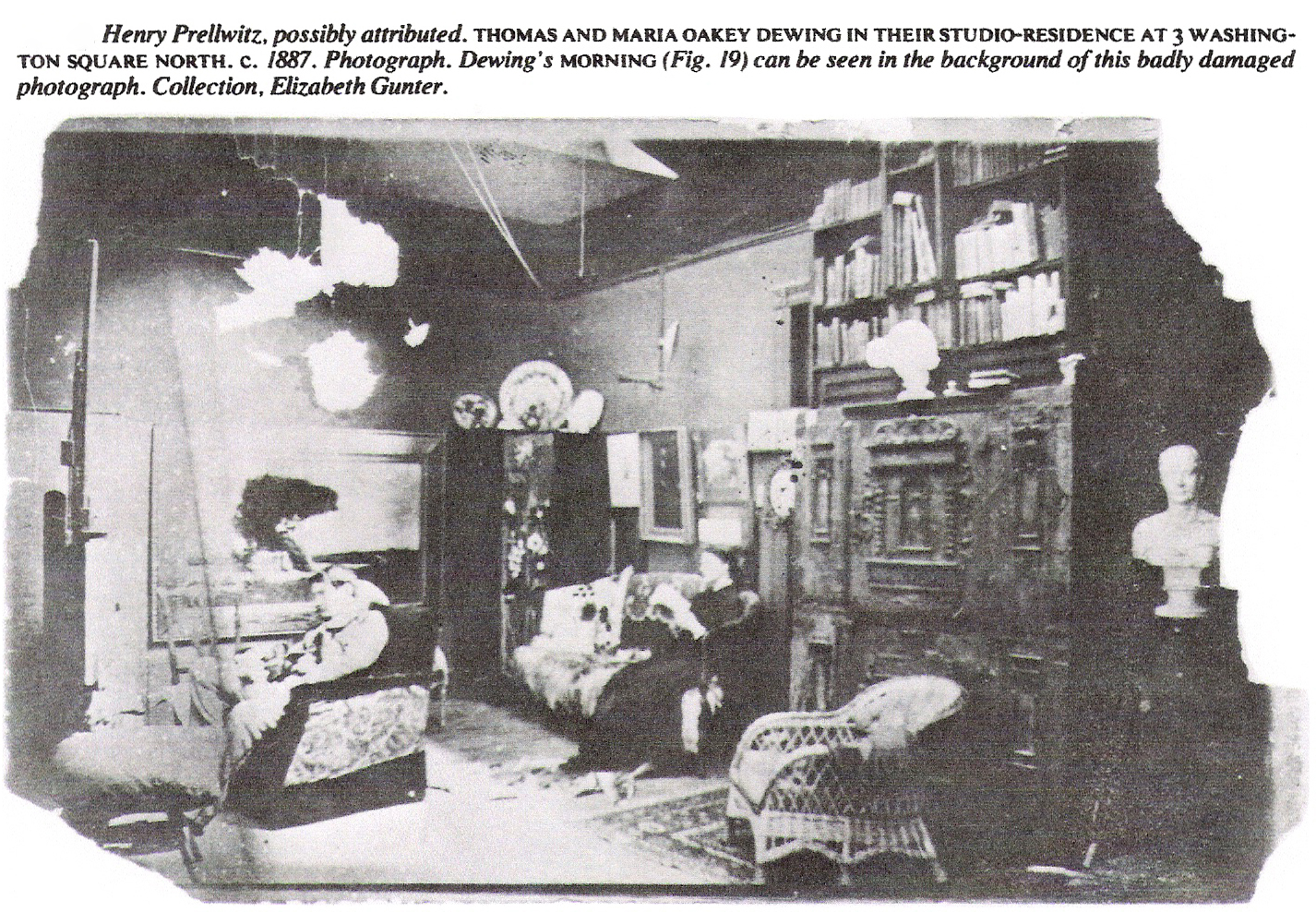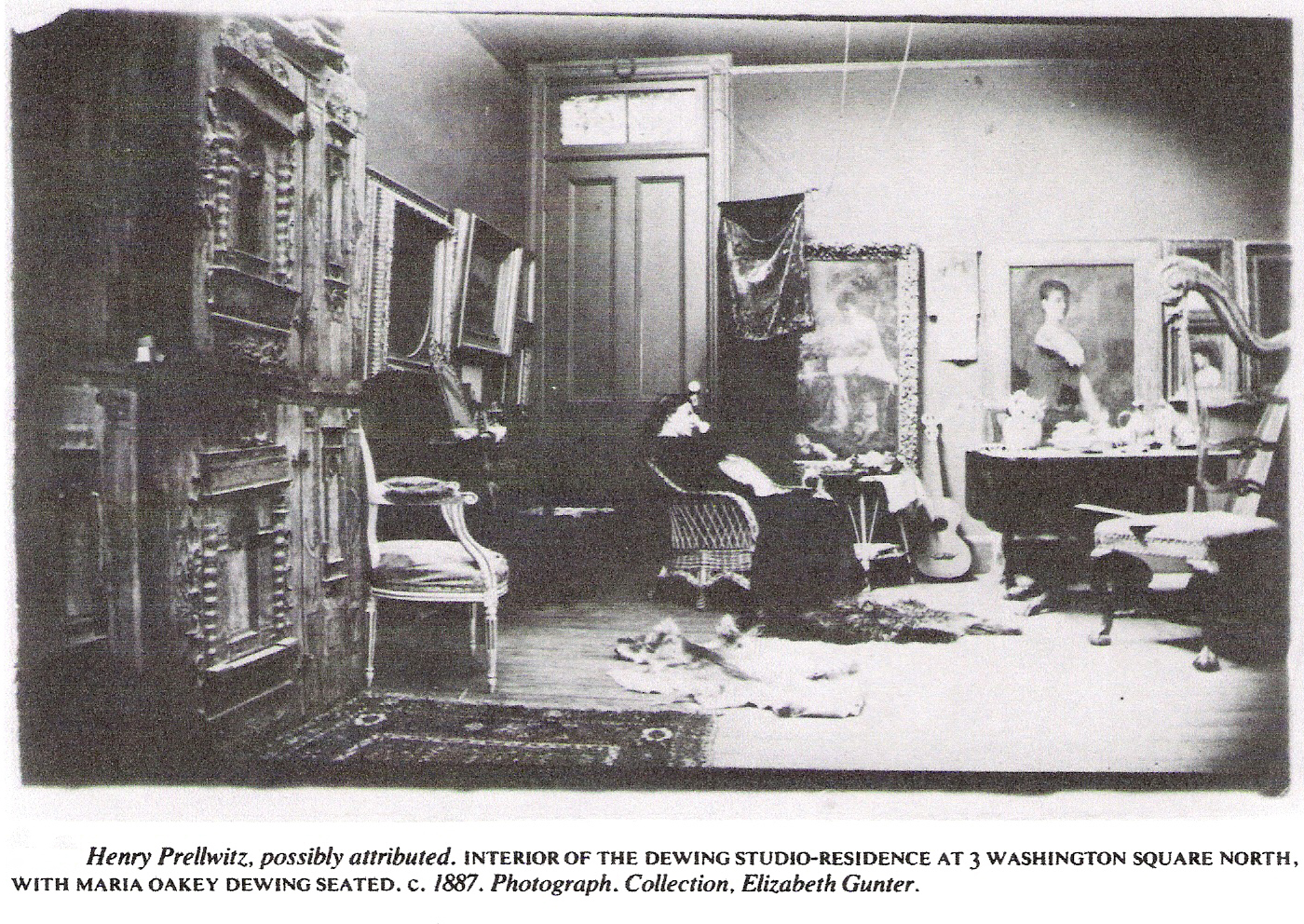Maria Oakey Dewing


Maria Oakey Dewing
|
 |
|---|
Mary Oakey Dewing was born in New York City on October 27, 1845. While growing up in New York City she studied art first at the Cooper Union School of Design for Women with William Rimmer and Robert Swain Gifford and later at the National Academy of Design. She learned to paint in oil and water-color and took classes in design and composition along with her lifelong friends Mary Stone, Mary Hallock, Olivia Ward, and Helena de Kay. She went on to study at the National Academy of Design in New York City from 1871 to 1875, eventually taking a life class. The artists, among them George de Forest Brush, Julian Alden Weir, Frederick Stuart Church, Abbott Handerson Thayer, Francis Lathrop, and the writer Henry James, gathered in the studio apartment that Oakey and de Kay shared on Broadway in 1873. In 1875 Oakey and other academy students left to establish the now renowned Art Students League.
Maria During the summers of 1872 and 1873 Oakey visited de Kay in Newport, Rhode Island, and there they took informal outdoor painting lessons from the highly respected painter John La Farge (1835-1910), whom Oakey believed was unsurpassed as a painter of flowers. La Farge worked from natural sources, but his compositions correspond to the "stylized realism expounded by Hokusai ... [and] Hiroshige," as James L. Yarnall has noted. Oakey's emphasis at this time on close-up views into a thicket of flowers and foliage was probably the result of her work with La Farge. However, there are no surviving examples of her early work to confirm this. Oakey and her young colleagues considered the exhibitions at the National Academy of Design stodgy and dominated by older members, so in 1874 they organized a sketch club in New York City, primarily composed of women. La Farge came down from Newport to join them, and he urged them to hold their own exhibition, which they did in the spring of 1875 at Cottier and Company in New York City. (13) This exhibition is considered a kind of salon des refuses that set the stage for a new art movement in the United States.She went on to study painting in Boston and in France at the Villiers-le-Bel. Her other shows included exhibits at the first exhibition of the Society of American Artists and various shows at the National Academy of Design. |
|---|
 |
 |
|---|
On April 18, 1881 she married Thomas Wilmer Dewing, an artist in his own right, and settled with him in New York City. Upon starting a family in 1885, Maria Oakey Dewing painted much less frequently and made her career second to her husband's. A devoted mother and wife, Dewing was also a writer of articles and books on etiquette and housekeeping and later in her life she wrote about painting for the national magazine "Art and Progress." However, her career held disappointment as a wife of one of the most prominent artists of the day. She felt unable to compete with Thomas although the two of them collaborated often, with Maria completing the floral settings for Thomas' paintings. |
|---|
 |
 |
|---|
The couple also painted many scenes while spending summers in the art colony of Cornish, New Hampshire. Dewing had her first one-woman show at the Pennsylvania Academy of Fine Arts in 1907 and her first one-woman New York show at Knoedler & Co. seven years later. Dewing died on December 13, 1927 in the same city where her life began, expressing regret for what she had given up in her painting career. |
|---|
Maria's husband, Thomas Wilmer Dewing was born on May 4, 1851 in Boston, Massachusetts where he spent his childhood. In his youth he was trained in lithography and portrait drawing in both Boston and Albany, NY. Before settling in New York City with wife and fellow artist Maria Oakey Richards in 1881, Dewing also studied in Paris at the Academe Julian. Dewing taught at the Art Students League in New York City and like his wife was elected to the Society of American Artists. In 1887 he was elected to the National Academy of Design in New York City and in 1908 to the National Institute of Arts and Letters. However, his career pivots on the year 1900, the fin-de-siecle, when the idealized nostalgia and dreaminess that were his hallmarks became dominant aspects of his artwork. Dewing's style derives from various sources around him, such as the artwork of artists James McNeill Whistler and Vermeer, who was in vogue during the 1890s when rare 17th Century paintings by the Dutch master appeared in America.
From that point forward paintings of a single woman in an incompletely defined interior space figured prominently in his works ("The Spinet"). Both Dewing and his wife were also influenced by Ralph Waldo Emerson and the young circle of transcendentalists that surrounded them. Known for his admittedly narrow focus, warm, glowing palette, and cool tonality, his art was also greatly influenced by French Impressionism and his good friend, the artist William Merritt Chase. Dewing looked upon his lovely paintings as decorations and created them to serve that purpose. During his illustrious career he also designed stained glass and public murals. The ethereal world of Dewing's paintings was eventually swept away by the artistic and political upheavals of the new century and the advent of Modernism in the art world, but he refused to change with the times and embrace the new style. After 1920, Dewing virtually ceased his painting activity and died 18 years later. Dewing existed for many years in obscurity but a resurgence in artistic nostalgia has restored his works to great esteem. Because some of the National Museum of American Art's earliest patrons were collectors of Dewing's works; the museum is now home to 23 paintings, pastels, watercolors and drawings |
|---|


